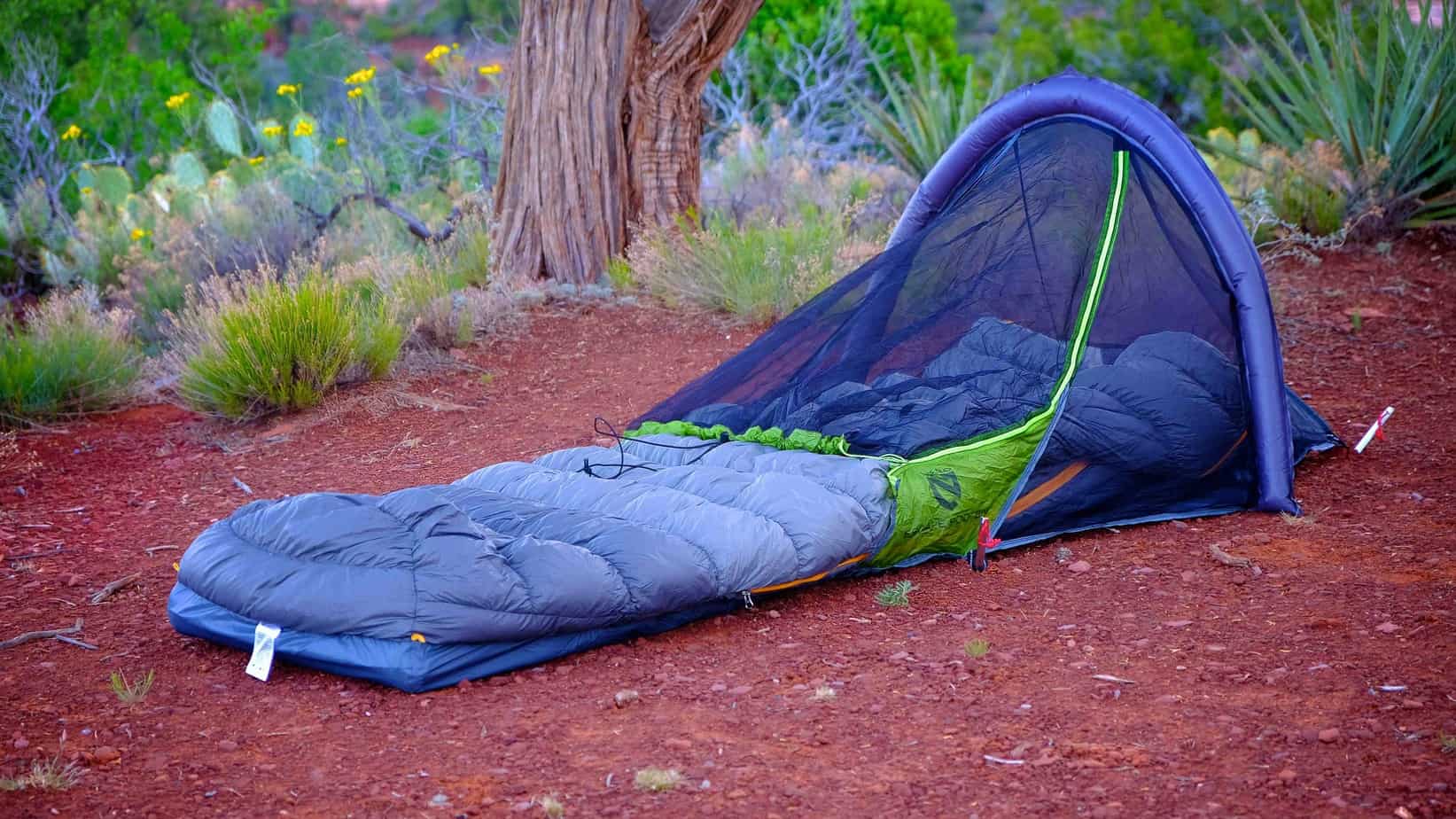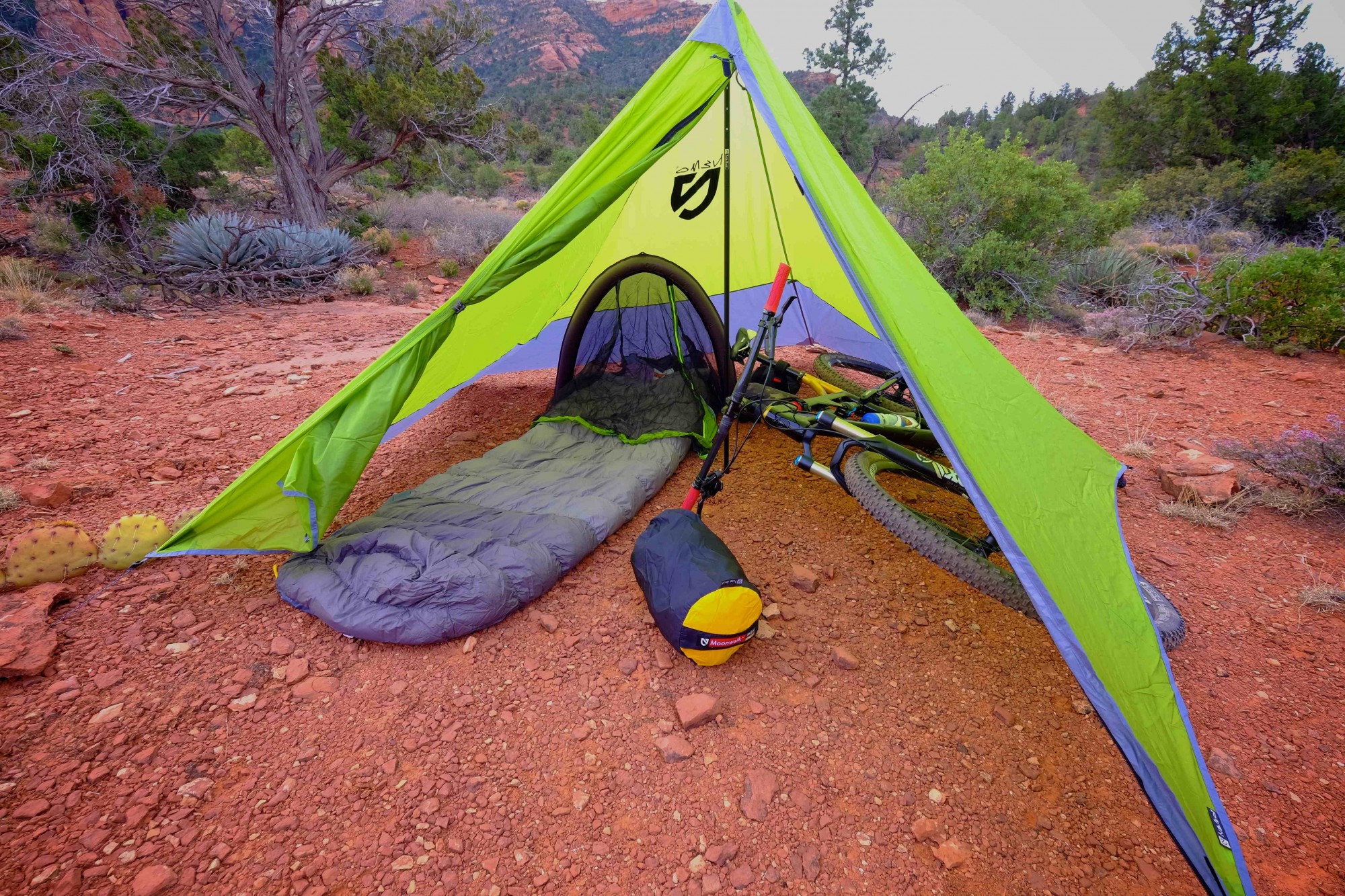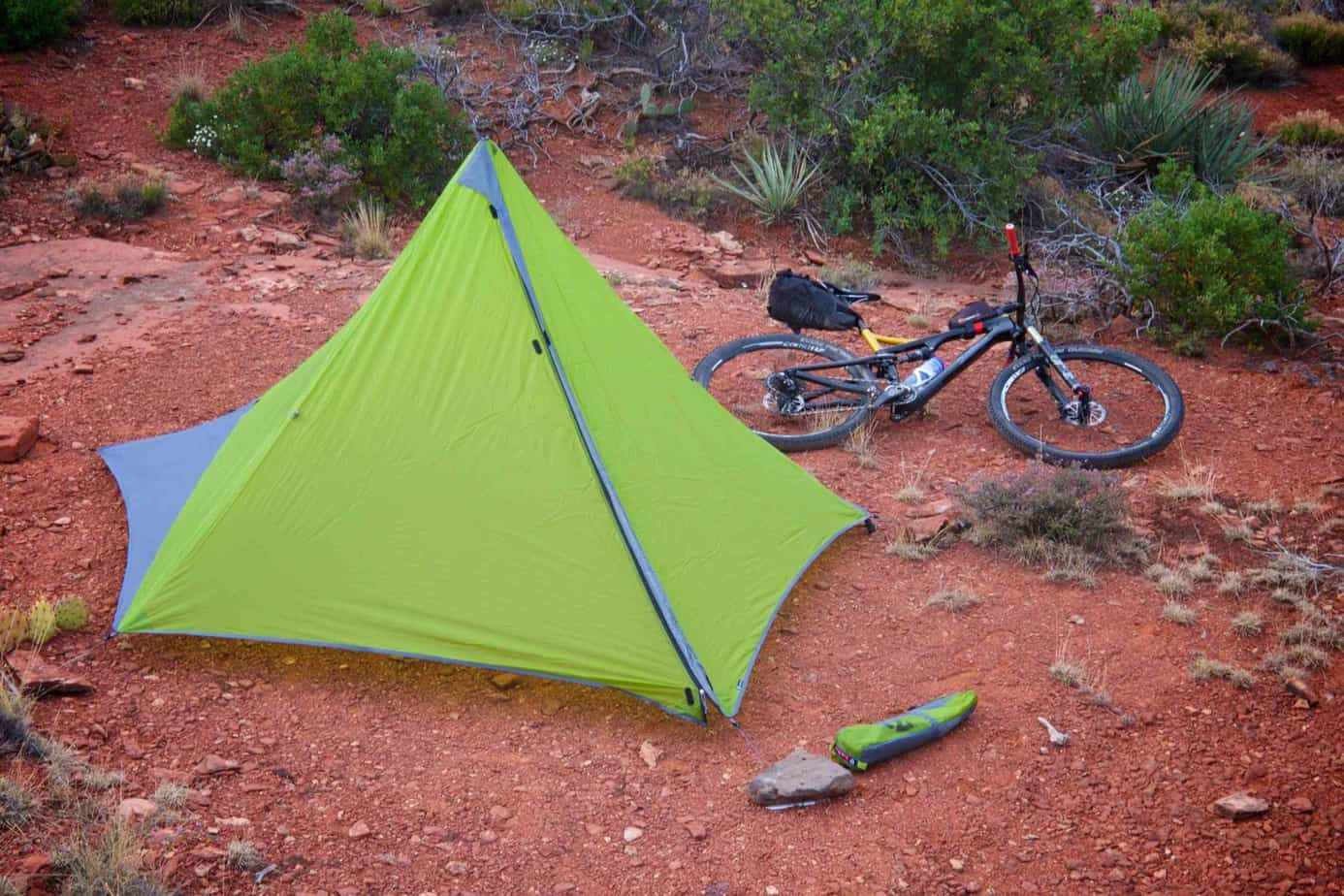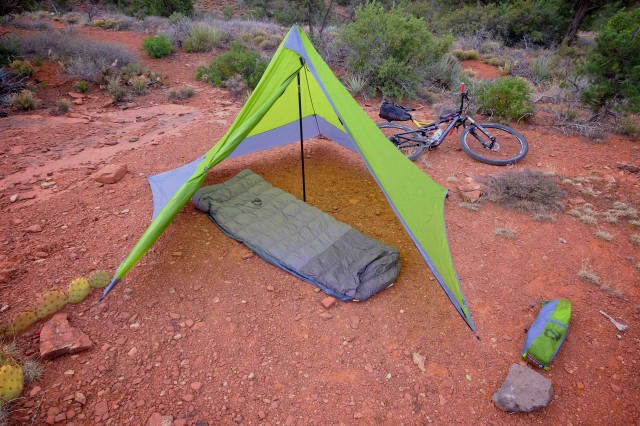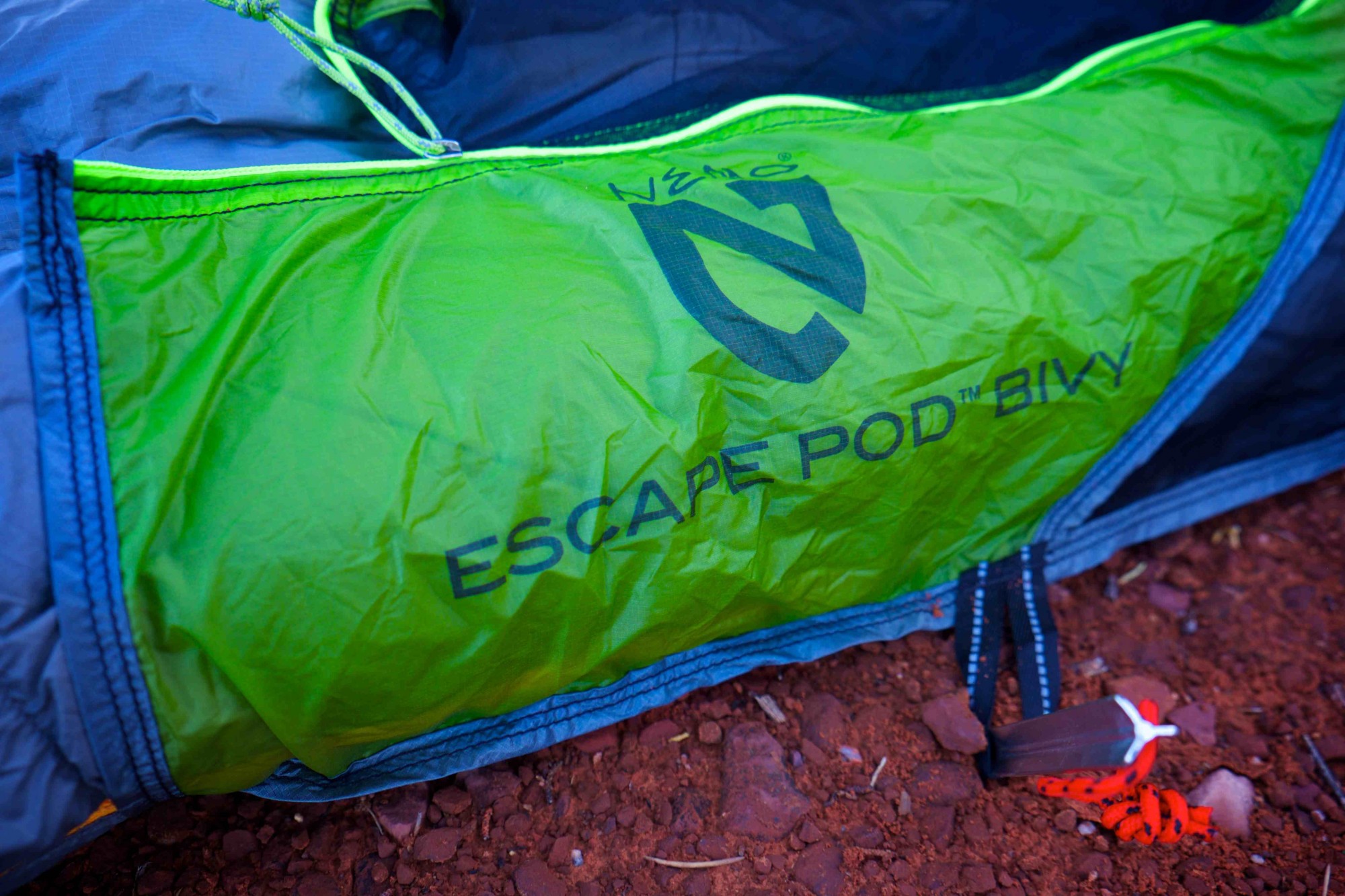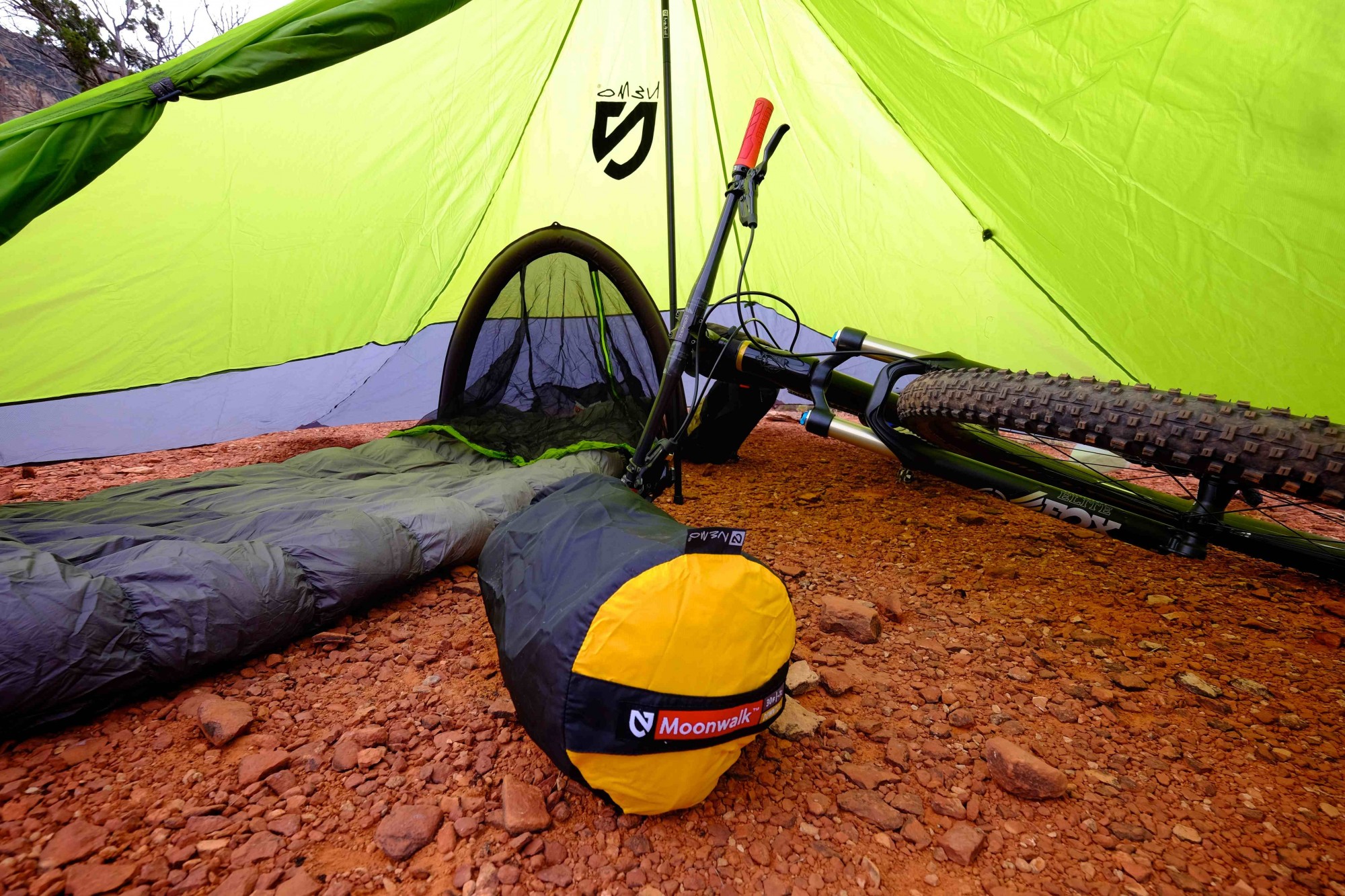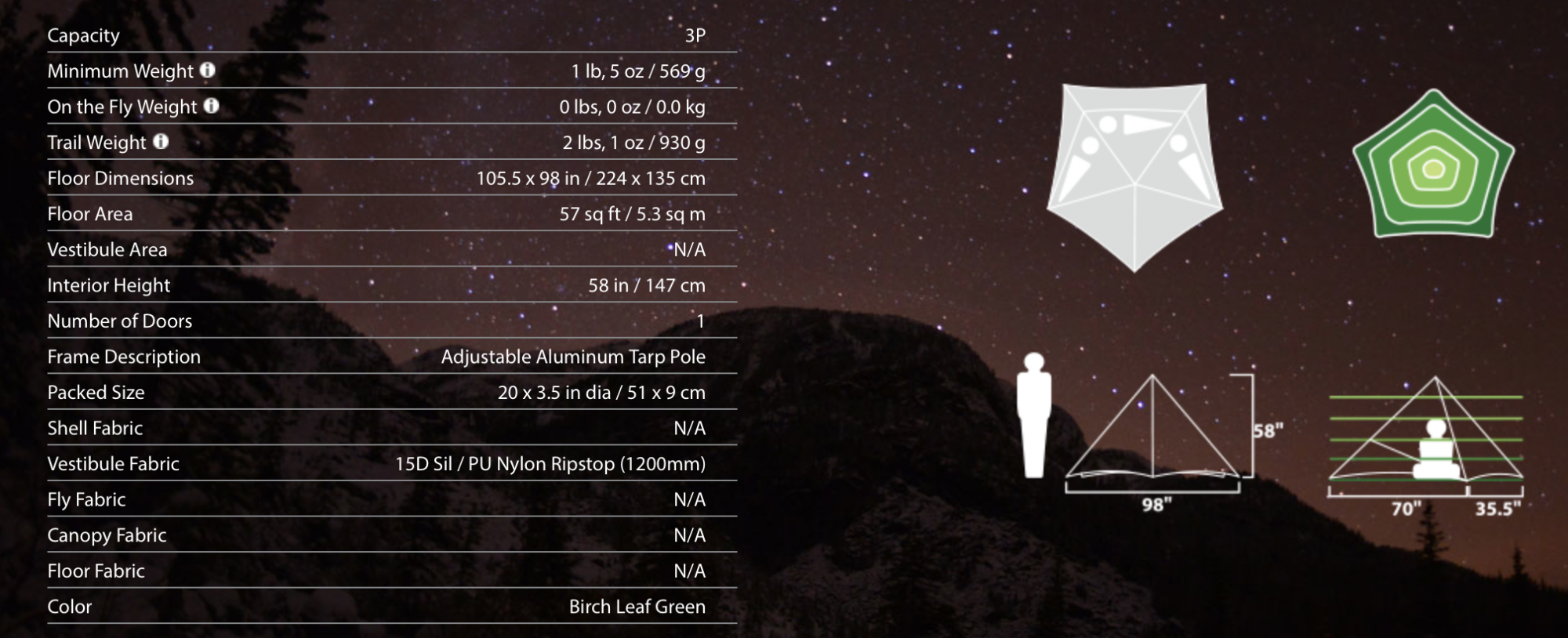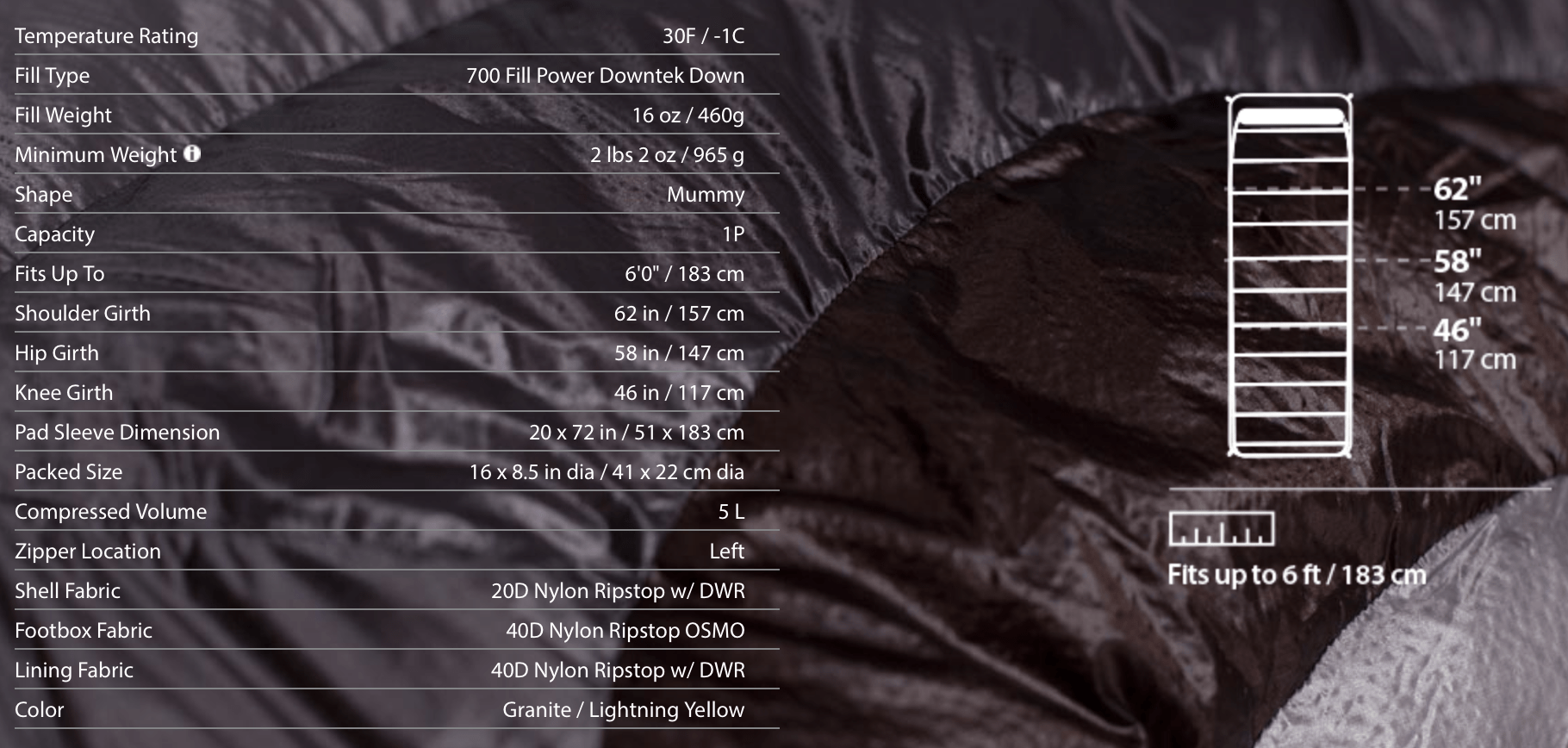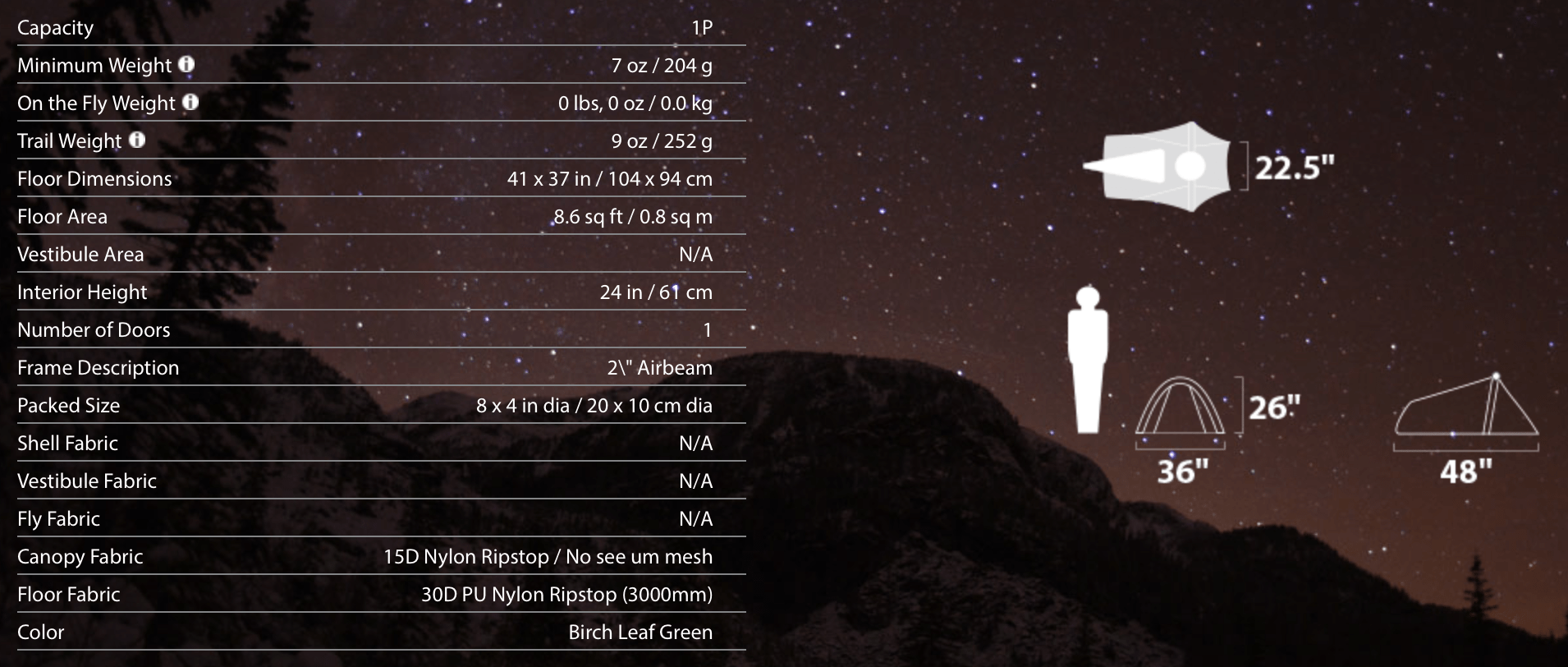Designing gear for niche markets is tricky business and few do it as well as Nemo Equipment. They have engineered many first-to-market products for overlanders and motorcycle tourers, their personal experiences within those pursuits evident in their final productions. This is equally true of their new bikepacking system consisting of the Apollo 3P tarp shelter, Moonwalk sleeping bag, and Escape Pod bivy.
I can understand why it has taken so long for the outdoor industry to design gear purpose-built for bicycle travel. For years the consensus was that if you could put it on your back, you could pack it on your bike, and for the most part that is true. Like our boot-bound counterparts, bikepacking shelters and sleeping bags need to be extremely light, compact, and of course it would be nice if they were comfortable.
For many bikepackers, keeping our loads small and light has often mandated skinny sleeping bags and snug bivy sacks. If you happen to fall asleep in such a kit, particularly on a cold and rainy night, you’ll likely have nightmares of being shoved in a sausage casing. It’s not comfortable. Ask me how I know.
At only 2,177 grams, or 4.8 pounds, Nemo’s three part system is undeniably light and meets the weight requirements for most riders, but it is not the lightest on the market. I do need to point out that by eliminating the stuff sacks, the total weight can be culled to just 4.6 pounds. By leaving the center pole at home, the weight shrinks even more to just under 4 pounds. If sharing the Apollo with two sleepers, especially three, the weight enters the featherweight category. But this is not just about gram counting. Other factors are of importance like versatility, storm worthiness, and creature comforts.
Apollo 3P Tarp ($250)
I am not unlike many backcountry travelers and rarely deploy my shelter, usually a bivy, choosing to sleep under the stars. When the weather turns ugly, the last thing I want to do is slither into my waterproof sack to wait it out. For this reason, I have taken to tarp shelters anytime I fear storms may intersect with my route. Tarps offer maximum coverage for a minimum of weight and the Apollo is spacious enough for three sleepers or big enough for one person to hold out a storm with their bike and gear tucked safely within.
The Apollo’s five-point anchor design and single support pole give it a quick pitch and like all teepee structures, is steadfast in strong winds. The asymmetrical shape places the 58-inch pole offset towards the front creating more open space at the aft end. That pole has five detents allowing the lower edge of the tarp to be placed at various heights off the ground to either seal out the elements or increase air pass-through. Poles have always presented a packing conundrum for bikepackers, and Nemo had the foresight to include an aluminum pole that breaks down to three 19-inch sections, a length that easily fits in a bar bag, small pack, or along a frame tube.
Moonwalk 30ºF sleep bag ($280)
Impressive as the Apollo is, it’s the Moonwalk that I was so eager to try. As they’re prone to do, Nemo dismissed traditional sleeping bag conventions and created a true one-off. The most interesting attribute is its waterproof tub-construction that permits the bag to be placed directly on the ground, eliminating the need for a ground sheet. The waterproof bottom also contains a sleeve which accommodates a standard 20×72-inch sleeping pad and the upper is filled with 16-ounces of 700 fill-power Downtek water-resistant down. Before using the Moonwalk, I didn’t realize how annoyed I was with my efforts to stay atop my sleeping pad, so having it held securely under the bag has been a nice change.
With its slightly tapered rectangular shape, the Moonwalk is a perfect solution for anyone who feels restricted by mummy bags and want more wiggle room. The 3/4 length zipper helps control internal temperature as does the adjustable draft collar at the neck. Nemo didn’t miss a trick including waterproof fabric placed atop the foot section, an area frequently saturated when bumped against the wet interior of a tent or tarp.
Escape Pod Bivy ($120)
As much as I have come to enjoy tarp living, my one quibble forces an embarrassing admission – I’m an entomophobe. I hate bugs. I have suffered my share of mosquitos, noseeums, and biting flies, but it’s the thought of scorpions, centipedes, and tarantulas that keeps this desert-dweller wide-eyed all night. The Escape Pod is the perfect antidote to my irrational fears of being consumed alive by nature’s worst creepy crawlies.
Unlike similar bug nets, the Escape Pod uses an inflatable hoop to hold the mesh aloft. A waterproof floor adds another layer of ground protection and the entire thing is held taught with four ground stakes. A large zipper provides easy entry and egress and a drawstring at the lower end holds the mesh tight against the bag. It would have to be one clever and determined little bug to work its way into the Escape Pod.
Notes from the Field
No matter how much I fiddle with products in my living room, nothing is more illuminating than real-world evaluations in the backcountry. I first used the Apollo when it was in the final design stages nearly a year ago. I’m pleased to see it has only gotten better since. On a recent trip with a cold wind howling, I was able to pitch the Apollo with the skirt of the lower edge pulled tight to the ground. It was a cozy sanctuary with plenty of room to move about. I continue to find convention little refinements to the Apollo. At one anchor point there is a small mesh pouch containing a length of cord which can be used to suspend the tent from a branch, eliminating the need for the center pole. There is also a nylon loop inside the tarp at its peak which makes for an ideal place to hang a small lantern, or in my case, cycling duds that needed a good airing out.
The Moonwalk has made a huge improvement to my sleeping comfort. I didn’t realize how constrictive my mummy bags were until I was able to let my tired legs move about. I find I wake up more rested in the Moonwalk, ready to tackle more miles with each consecutive night’s sleep. With an insulated pad and warm sleeping layers, I’ve been able to sleep in temperatures as low as 40ºF and maybe a tad lower. I have bones made of brass, so I admit I sleep colder than most. Because the lower aspects of the Moonwalk have no insulation at all, an insulated pad is a must in anything other than summer temps.
Considerations, nit-picks, and the final verdict
Many product reviews obtain their objectivity by contrasting all of the positives against the negatives. Few products are perfect, but that doesn’t mean the designers made missteps, but rather choices worth consideration. For those in search of the absolute lightest and most compact bikepacking system, this is not it. The Moonwalk, while sublimely comfortable, weighs 2.2 pounds (965 grams) which, even considering the built-in ground sheet, is considerably heavier than most 30ºF lightweight bags. I can certainly suffer an extra 200-300 grams, but it is the packed size that may present the bigger issue. The Apollo does not pack small and consumes the entirety of my Bedrock Bags seat pack, a compartment that I typically fill with far more than just my sleeping bag. The packed size is not a deal breaker, but a compromise made in the name of blissful slumber.
I can’t say I found anything else I would file under nit-picks. I find inserting the pad into the sleeve of the Moonwalk takes some effort, but I don’t see how Nemo could have made that process any easier, so it is––what it is. I’ll gladly trade those two minutes of fussing for several hours of good sleep. Overall, all three components are well thought out, nicely executed, and a great first entry into bikepacking-specific outdoor gear.
On a parting note, just because this system was aimed bikepackers, that doesn’t mean it isn’t a fantastic solution for all types of backcountry travel. This kit will inevitably work its way into my motorcycle panniers, and I’m sure it will be my go-to for backpacking and even a few car camping forays. Innovation is hard won anymore, but Nemo Equipment continues to lead the charge with advanced designs. I look forward to many cozy nights in Nemo’s latest gear. I’ll be warm, dry, and just let those bugs try to get me.
www.nemoequipment.com


